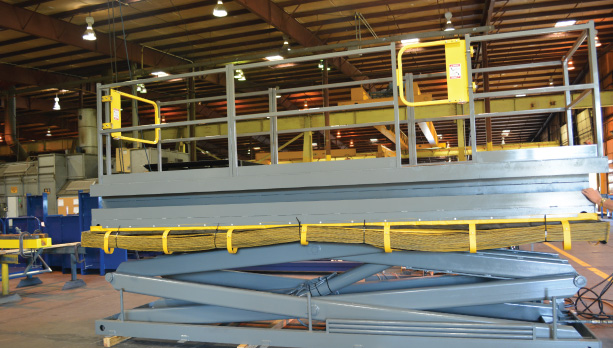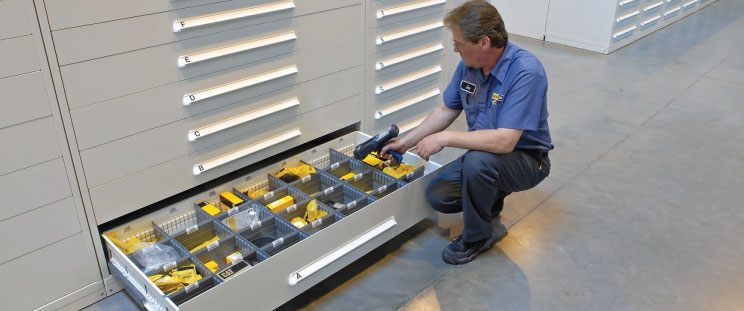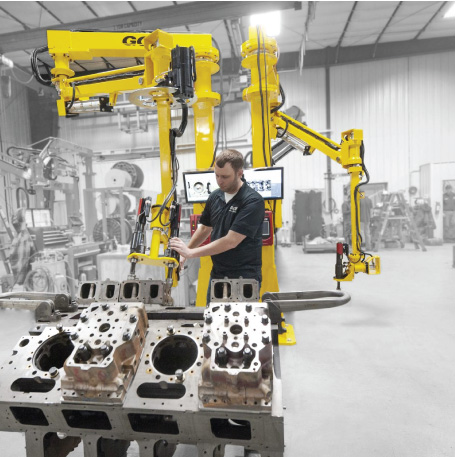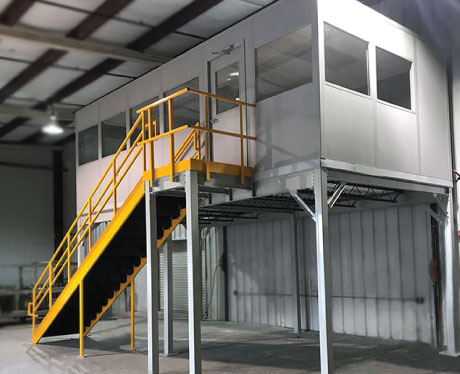Warehouse Lift Equipment
Lifts are useful for quickly moving heavy items and even people from point A to point B. They are common in construction sites and material handling facilities such as warehouses, factories, and storage depots. Lift systems make it much easier to hoist and haul heavy cargo and also help create a safe workplace environment for the staff involved, especially those handling hazardous or delicate materials.
Industrial lifts have been around for decades. Thanks to advancements in hydraulic, pneumatic, electrical, and mechanical technologies, lifts have evolved over the years into various distinct designs and models. In this guide, we’ll discuss four main types of lifts, highlighting the distinguishing features and ideal applications for each type.
Visit our products page if you’d like to learn more about specialized lift equipment and tools.
Let’s get started on the different types of lifts and their uses:
Boom lifts
Boom lifts are some of the most common and versatile types of lifts available today. They have a pretty basic design and working principle. An arm (known as the boom) sits on a turntable mounted on a motorized vehicle or ground anchor. A bucket, cage, or lifting platform is attached to the other end of the boom. The arm can stretch out vertically and swivel on the turntable to raise, lower, and rotate the bucket into position.
Boom lifts are typically used outdoors or in large warehouses, mostly to hoist workers repairing, painting, or cleaning hard-to-reach places. Farmers also use them to pick fruit from trees.
There are two types of boom lifts:
- Telescopic boom lifts (with straight boom)
- Articulating (knuckle) boom lift (with jointed boom)
Scissor lifts
A scissor lift features a more compact design compared to a boom lift. Instead of an arm, scissor lifts have a cross-brace mechanism that moves up and down between the base and the platform. Depending on its application, the lift can sit on either a movable vehicle or a solid base. The lifting platform can be a flat scissor lift table or a caged bucket that accommodates one or two people.
This type of lift is generally used in applications that only need up and down movements, such as accessing high shelves in warehouses and any task requiring an elevated work platform.
Scissor lifts come in a wide range of specs and builds for various applications. However, the design largely stays the same. The only distinction between the different types of lifts is the power source, which can be:
- Hydraulics
- Pneumatic
- Diesel
- Electric
Freight lifts/vertical conveyors
Freight lifts or vertical conveyors are used to move cargo from one elevation point to another in a storage or processing facility. They often lie between two horizontal conveyor systems separated by a height. In most cases, vertical conveyors link different sections of industrial supply chains or floors in a multistory building. But unlike service elevators, these types of lifts are not rated for human cargo. Unlike passenger elevators, freight lifts abide by a national safety code described in the ANSI/ASME B20.1 (Safety Standards for Conveyors).
Freight lifts fall into different categories depending on their build structure and design. Below is a list of the main types of vertical conveyors. Note that there are several iterations of the same designs, which further split these into even finer subcategories.
- Vertical reciprocating conveyors
- Continuous vertical conveyors
- Spiral conveyors
- Vertical screw conveyors
- Scissor lift conveyors
Aerial lifts
An aerial lift is any vehicle-mounted elevation platform used to temporarily hoist personnel or cargo to otherwise inaccessible heights. Basically, it is any mechanical work platform that replaces ladders, scaffolding, and harnesses in a job site, be it construction, building maintenance, or warehouse stacking. This type of lift includes:
- Boom lifts
- Scissor lifts
- Bucket trucks
- Cherry pickers
- Personnel lifts (mechanical ladders)
Wrapping up
Industrial lifts come in all different sizes, specs, shapes, and designs. Although most lifts are built to be as versatile as possible, each type suits a particular application, industry, or use case. Understand your elevation requirements in order to determine the most suitable type of lift for your needs.If you’re still stuck on choosing the best type of lift for your business, Handling Solutions Inc. is here to help. Don’t hesitate to reach out via our website or call 704-554-7117 for more information about lift equipment.




